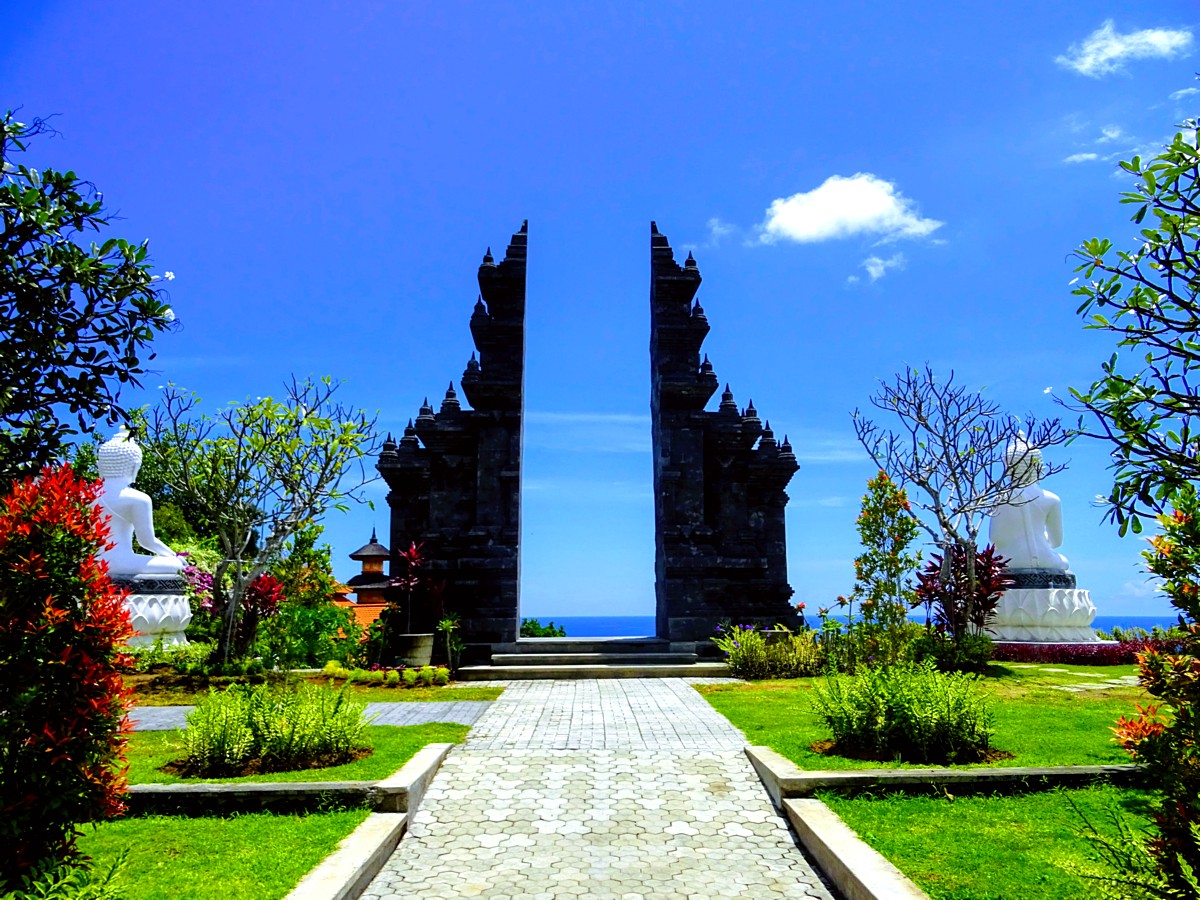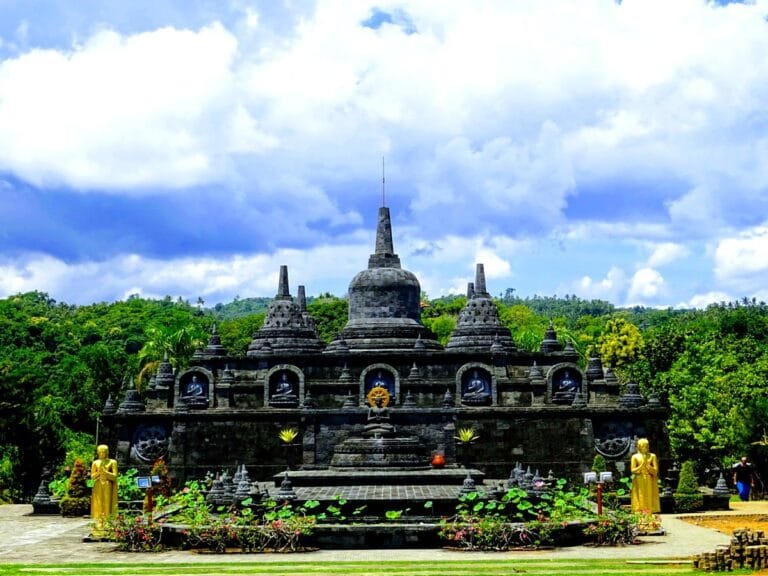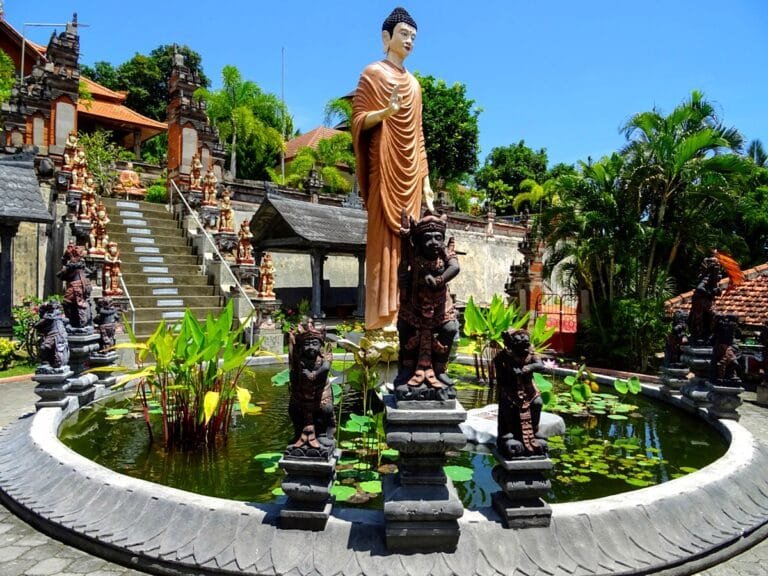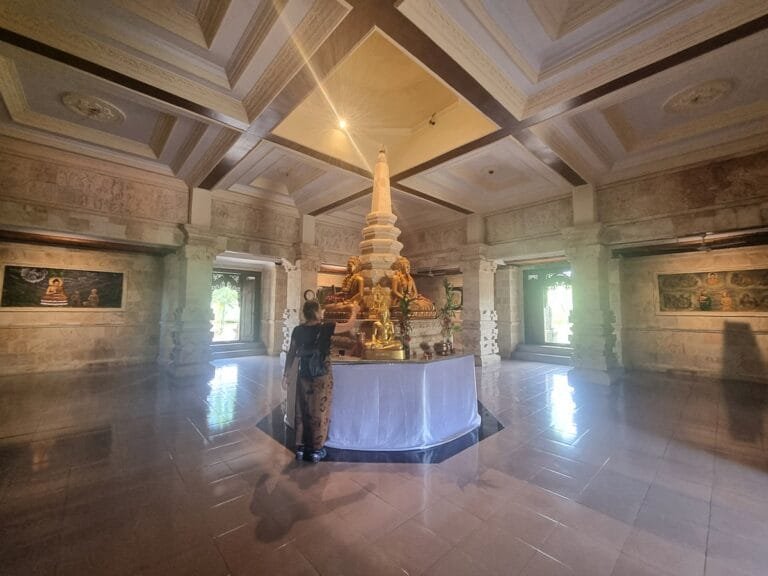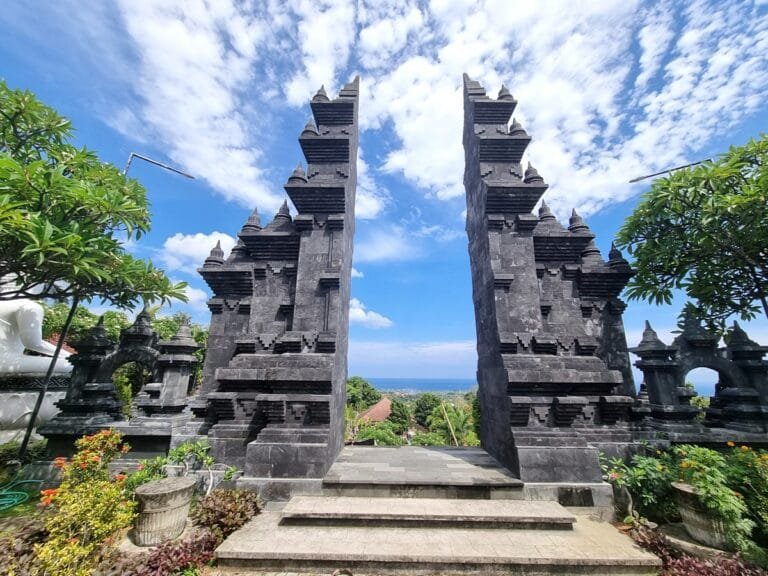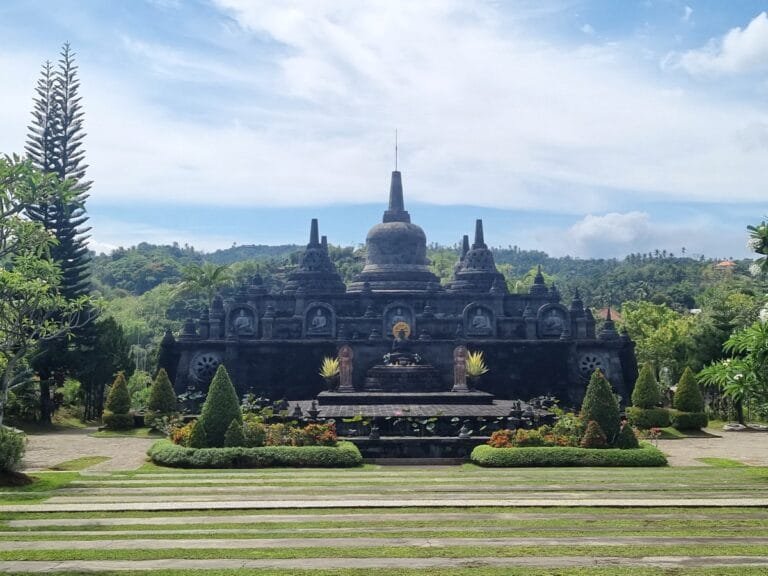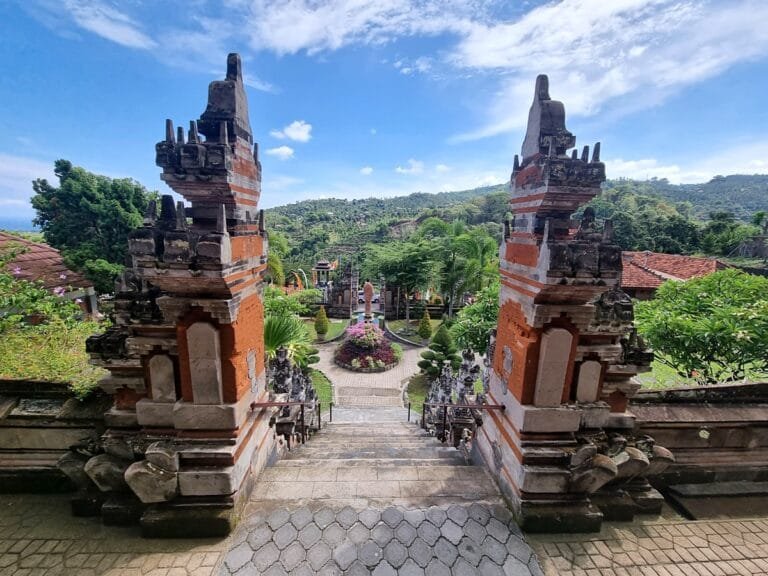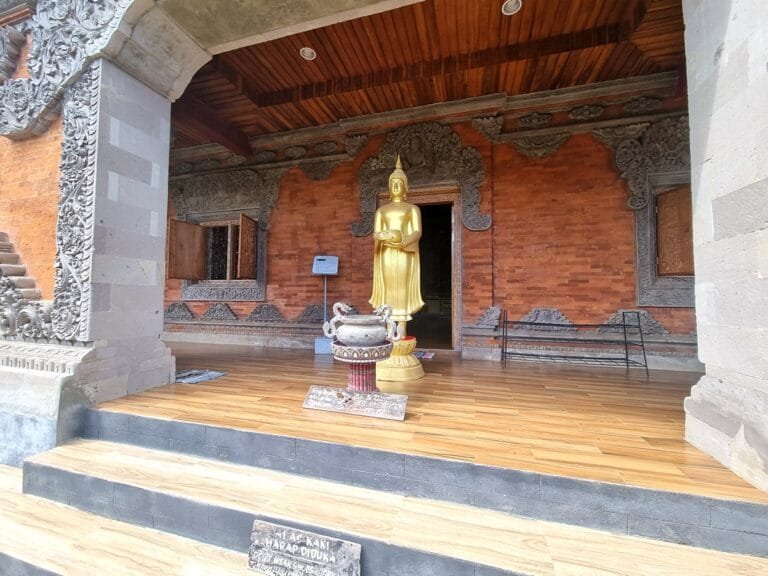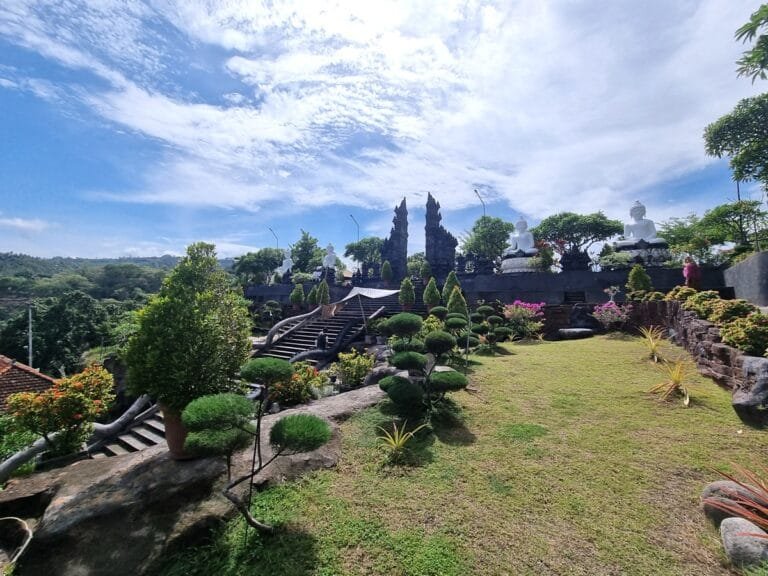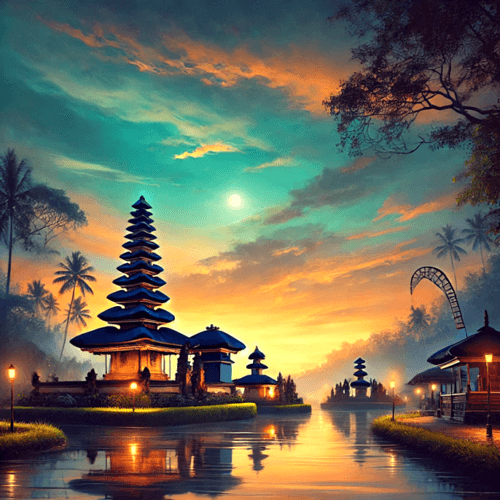In the heart of northern Bali lies a sanctuary of peace and meditation, where Buddhist philosophy blends with the lush tropical surroundings.
Bali’s Largest Buddhist Monastery
Brahma Vihara Arama is the largest Buddhist monastery in Bali, located in the tranquil hills of Banjar, near Lovina in North Bali. Also known as the Buddhist Temple of Banjar, this serene complex offers visitors a peaceful escape with its lush gardens, golden Buddha statues, and stunning panoramic views of the surrounding landscape. Although Bali is predominantly Hindu, Brahma Vihara Arama showcases the island’s rich diversity of religious traditions and serves as a place of meditation, learning, and spiritual retreat for locals and visitors alike.
History and Significance of Brahma Vihara Arama
Brahma Vihara Arama was constructed in the 1970s under the guidance of a Balinese Buddhist monk named Biksu Giri, who aimed to create a sanctuary where people could meditate and reflect. The temple has since become a significant spiritual site, not only for Balinese Buddhists but also for Buddhists around the world. It’s a place where religious and cultural harmony is promoted, reflecting Bali’s unique ability to blend different spiritual traditions peacefully.
Exploring the Temple Grounds
Brahma Vihara Arama is spread across multiple levels, each offering different spaces for meditation, prayer, and reflection. The complex is beautifully landscaped with manicured gardens, tranquil pools, and statues of Buddha in various poses, each representing different aspects of Buddhist teachings.
TIP: Visit Brahma Vihara Arama in the morning to enjoy the temple’s peaceful atmosphere before the midday heat sets in, and take a moment to meditate in one of the serene pavilions.
Spiritual and Cultural Significance
The presence of this Buddhist monastery is a testament to the coexistence of different religious practices on the island. For local Balinese Buddhists, the temple serves as a place for Vesak Day celebrations, meditation retreats, and spiritual teachings.
Visitors are encouraged to dress modestly and respect the temple’s peaceful environment. It’s a functioning monastery where monks reside and meditate, so maintaining quiet and calm during your visit is essential.
Practical Information for Visiting Brahma Vihara Arama
- Opening Hours: Open daily from 8:00 AM to 6:00 PM.
- Best Time to Visit: Early morning or late afternoon, when the air is cooler and the temple is less crowded.
- Dress Code: Modest clothing is required; sarongs are available to borrow at the entrance.
How to Get to Brahma Vihara Arama
Brahma Vihara Arama is located in the Banjar area of northern Bali, about 10 kilometers from Lovina Beach. It takes around 2.5 to 3 hours by car from Ubud or Seminyak. The easiest way to get there is by hiring a private driver or joining an organized tour that explores the northern parts of the island, often combined with a visit to the nearby Banjar Hot Springs.
Nearby Attractions
- Banjar Hot Springs: Located just a short drive from the monastery, these natural hot springs are a great place to relax in warm, mineral-rich waters after visiting the temple.
- Lovina Beach: Famous for its black sand and dolphin-watching tours, Lovina Beach offers a peaceful coastal retreat just 15 minutes from Brahma Vihara Arama.
- Gitgit Waterfall: A beautiful waterfall nestled in the northern highlands, perfect for a scenic hike.




